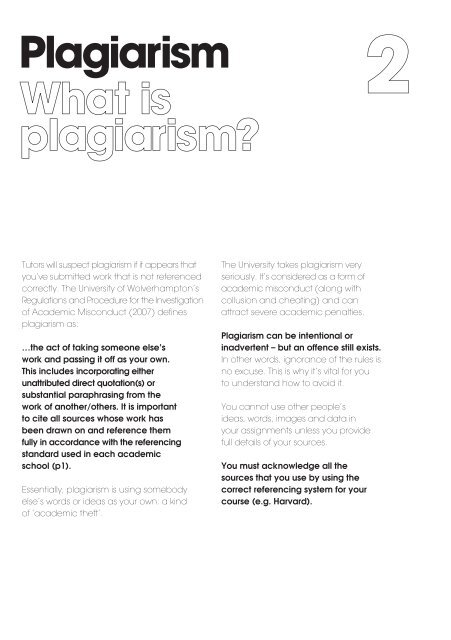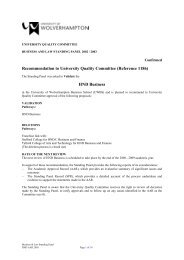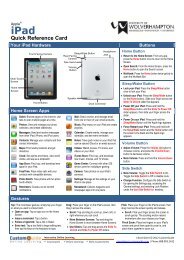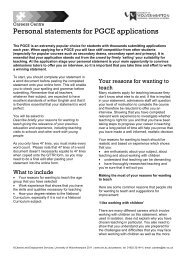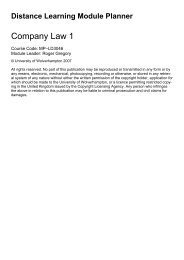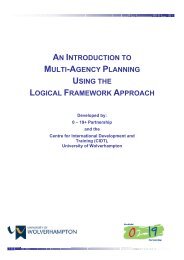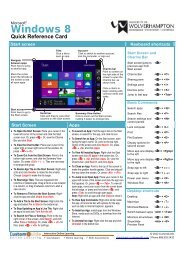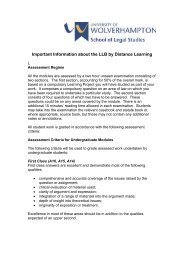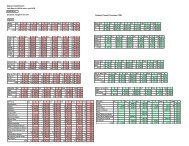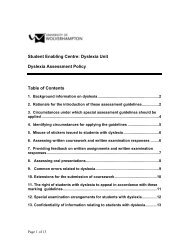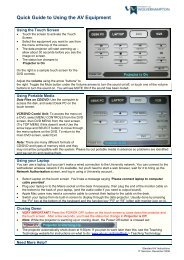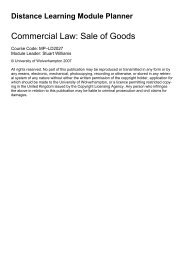Academic Misconduct Guide - University of Wolverhampton
Academic Misconduct Guide - University of Wolverhampton
Academic Misconduct Guide - University of Wolverhampton
You also want an ePaper? Increase the reach of your titles
YUMPU automatically turns print PDFs into web optimized ePapers that Google loves.
PlagiarismWhat isplagiarism?2Tutors will suspect plagiarism if it appears thatyou’ve submitted work that is not referencedcorrectly. The <strong>University</strong> <strong>of</strong> <strong>Wolverhampton</strong>’sRegulations and Procedure for the Investigation<strong>of</strong> <strong>Academic</strong> <strong>Misconduct</strong> (2007) definesplagiarism as:…the act <strong>of</strong> taking someone else’swork and passing it <strong>of</strong>f as your own.This includes incorporating eitherunattributed direct quotation(s) orsubstantial paraphrasing from thework <strong>of</strong> another/others. It is importantto cite all sources whose work hasbeen drawn on and reference themfully in accordance with the referencingstandard used in each academicschool (p1).Essentially, plagiarism is using somebodyelse’s words or ideas as your own: a kind<strong>of</strong> ‘academic theft’.The <strong>University</strong> takes plagiarism veryseriously. It’s considered as a form <strong>of</strong>academic misconduct (along withcollusion and cheating) and canattract severe academic penalties.Plagiarism can be intentional orinadvertent – but an <strong>of</strong>fence still exists.In other words, ignorance <strong>of</strong> the rules isno excuse. This is why it’s vital for youto understand how to avoid it.You cannot use other people’sideas, words, images and data inyour assignments unless you providefull details <strong>of</strong> your sources.You must acknowledge all thesources that you use by using thecorrect referencing system for yourcourse (e.g. Harvard).


